

The interior is justly famous and totally unique, with a plan based on two interpenetrating triangles--a sort of star/hexagon shape. See here for plan of the interior. In Rudolf Wittkower's Art and Architecture in Italy, there is a complicated explanation of this plan.The altar--one point of a star, but rounded | ||
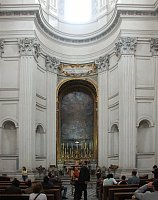
|

|
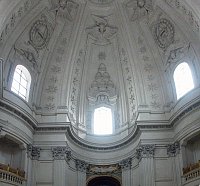
|
The entrance--also a point of a star which is truncated and the slice across the point made convex |
||
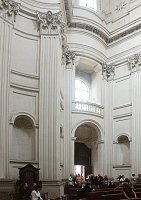
|
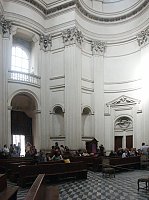
|
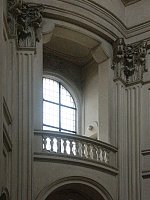
|
A view of the sideThe applied plaster decoration as well as the capitals of the fluted pilasters allude both to the Popes who reigned during the construction of this church and to other important Christian concepts. Below, for example, palm leaves refer to martyrdom while the flaming crown is a symbol of charity. "The oak wreathe is both a traditional symbol of glory and wisdom and a symbol of Pope Alexander VII..."(quoted from an email from Roberto Piperno, whose site on Rome as well as Christian symbolism is very helpful). |
||
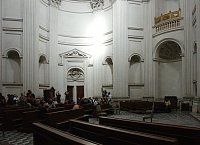
|
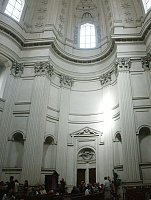
|

|
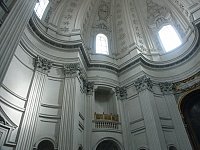
|
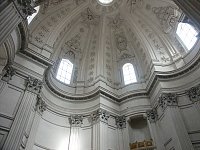
|
The dome caps the church without any transitional structure and continues the star plan of the church. Even the pilasters of the lower wall are continued in the dome. The verticality of the dome is emphasized even though there is a wide entablature separating the wall of the church from its dome. |
| The six mounds/mountains and star are on the papal coat of arms for Alexander VII. Stars proliferate--as linear stripes on the dome and even on the capitals. See also the three-dimensional version on the exterior. | 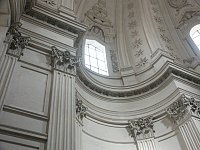
|
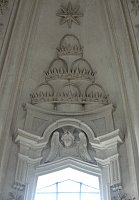
|
 Click here to return to index of art historical sites.
Click here to return to index of art historical sites.
 Click here to return to index of artists and architects.
Click here to return to index of artists and architects.
 Click here to return to chronological index.
Click here to return to chronological index.
 Click here to see the home page of Bluffton University.
Click here to see the home page of Bluffton University.

